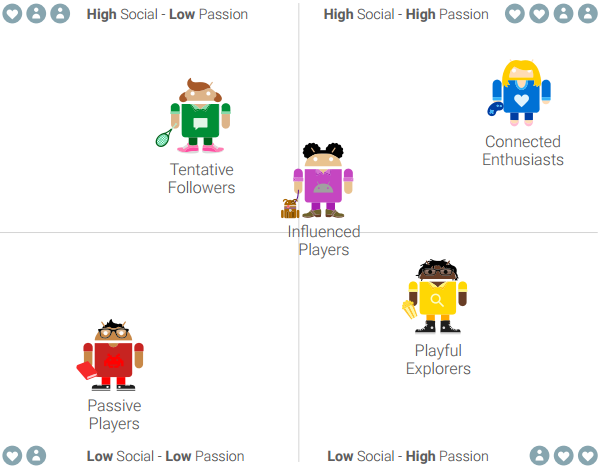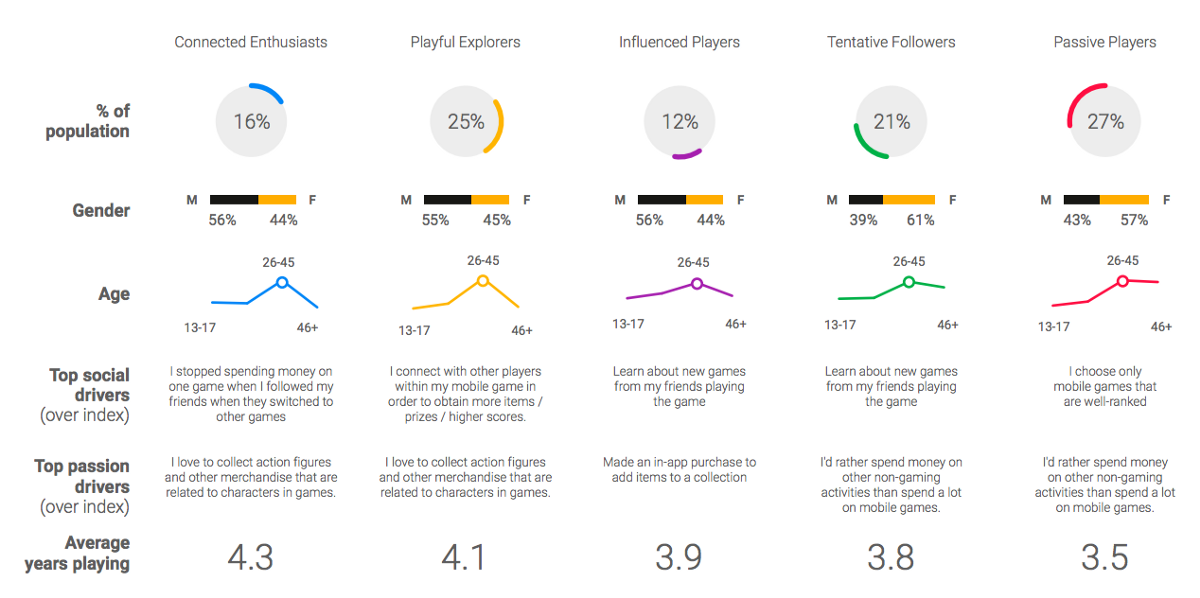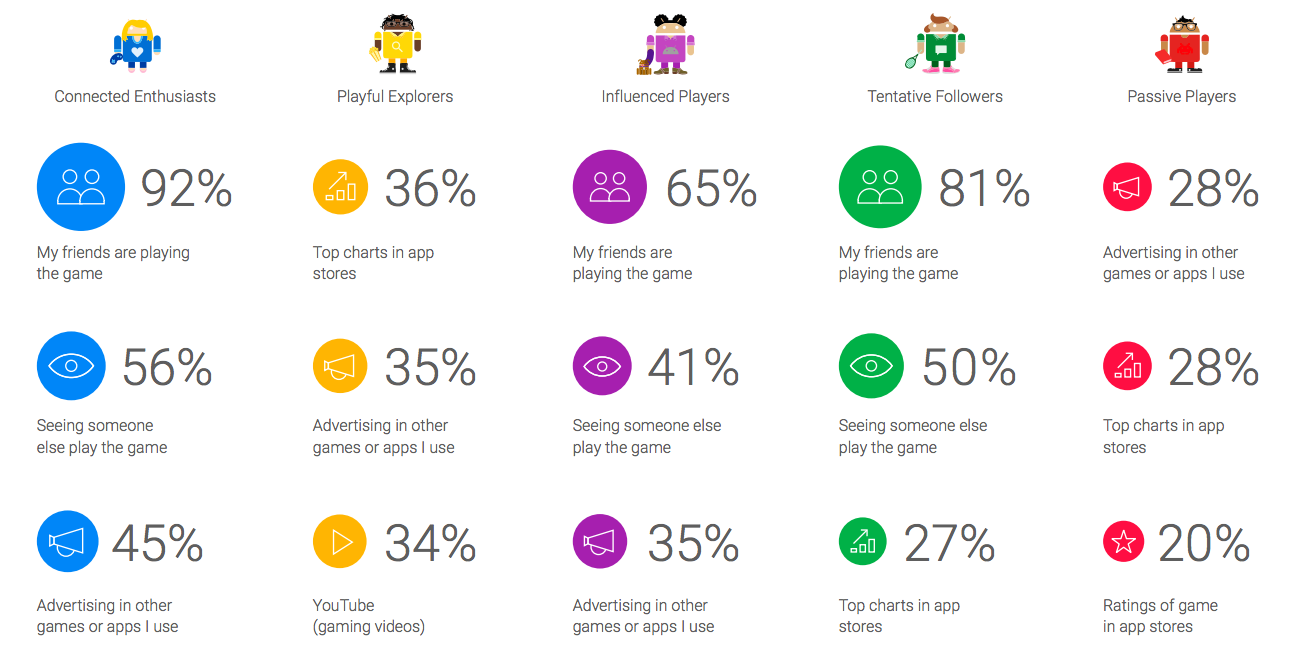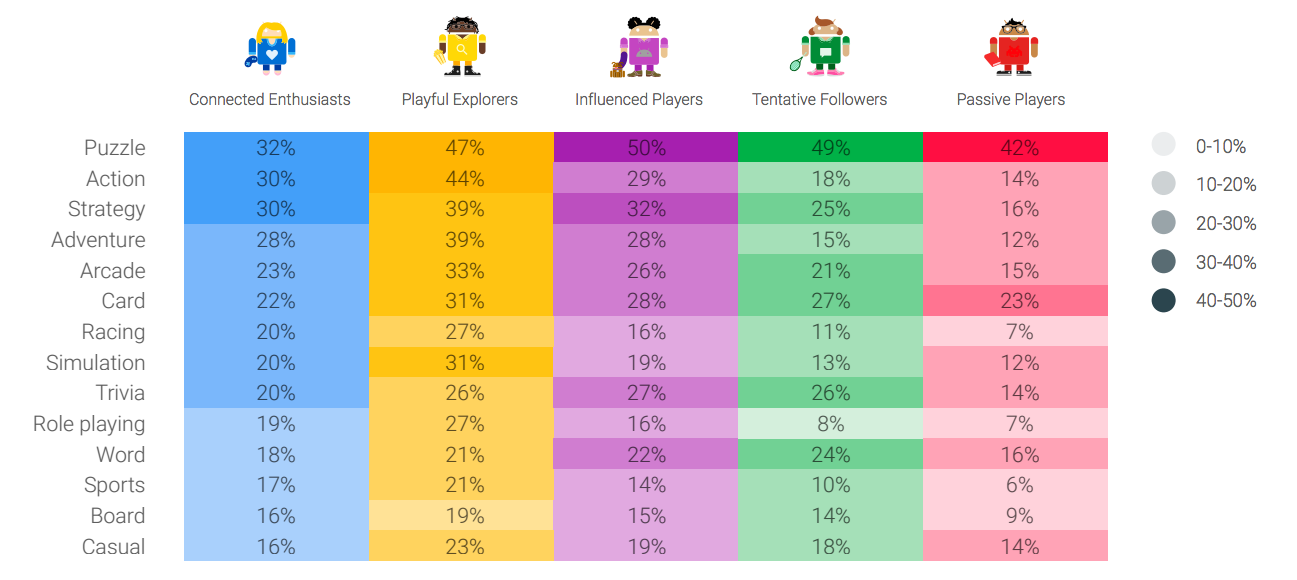Google has published a study in which it introduces a new segmentation of players. We publish a translation of the company’s post about this study.
The author of the original post is Allan Bevans, a UX engineer at Google.
The growing popularity of mobile games around the world means one thing: more and more people are joining games, becoming a gaming audience previously limited to PCs and consoles. The result of such expansion is obvious: the gaming audience is increasingly heterogeneous.
The diversification of gamers is not only a great opportunity for the gaming business, but also a serious challenge. To create projects that can excite and engage such a diverse audience, developers should undertake a deep analysis of their current and potential consumers.
To conduct such analyses, Google Play, together with SKIM Analytics, launched a study aimed at understanding the differences and similarities in the requests and behavior of mobile gamers in the world. Initially, we launched the study for internal purposes, but we believe that its results are also significant for the wider community of mobile game developers.
We used to say “gamers”, now we say “players”
The easy way is to assume that people who play games are divided into two opposite groups: hardcore gamers who live and breathe complex, high–skill games, and casual gamers who spend time on projects that do not require effort and skills.
These extremes are also commonly associated with a number of demographic assumptions and stereotypes, a la “hardcore gamers are young men” and “casual gamers are older women”.
In fact, most gamers are dispersed between these two extremes across the entire spectrum of the gaming audience.
On Google Play, we decided it was better to call them players than gamers: this will help us to talk about the whole spectrum of game behaviors, not just about extremes.

The role of games in the player’s life and his social behavior is the main thing that causes most of the similarities and differences
The first difficulty in analyzing the received data was their ordering. How are these millions of players similar or different from each other in terms of mentality, requests, character when it came to mobile games?
During the study, which involved more than 20 thousand mobile players from 8 regions, we asked a series of questions about different aspects of their gaming interactions: how do they learn about games, what is important to them in the information about games, how and when they play, what role games have in their lives, and so on.
We found out that the questions that really segment players among themselves relate to social behavior (social behaviors) and passion for games (passion for games).
Social behavior includes both the influence of other players on the choice of a project to buy and download, as well as playing against other players or participating in a community, alliance, clan.
Passion for games is characterized by the time spent on them, a place in life, as well as fan behavior, such as buying branded merchandise.
We identified five different segments of players, just starting from social behavior and passion for games:
- Connected Enthusiasts
- Playful Explorers
- Influenced Players
- Tentative Followers
- Passive Players

These five segments are distinguished by different behavioral patterns that can be used to understand gaming preferences and motivations.
We analyzed our discovery and came to the following four conclusions.
1. Demographics are not the main driver of differences
Once we identified the five segments, we set about studying them in terms of who they are and how they behave. Although demographic differences between segments are present, they are not the main factors of differentiation.
Too often, segmentation differentiates cohorts by age or gender, which can hide key commonalities or differences that really matter.
For example, in our case, the dominant age portrait of all segments is the same – people from 26 to 45 years old (connected enthusiasts a little younger, passive players a little older).
Similarly, in terms of gender, men slightly prevail in three groups out of five.
2. Players use different channels to search for games
‘Connected enthusiasts’ use most channels to find new games, but almost all the main channels include other people. These can be both real-life acquaintances and online users. For example, opinion leaders on YouTube. Enthusiasts are highly likely to react to ads inside applications.
‘Playful explorers’ are less socially dependent, their main game search tools are the Play Store charts, YouTube, advertising and ratings.
As expected, for ‘influenced players’ and ‘tentative followers’, the most important source of information about games is other people. It doesn’t matter if it’s friends, streamers or random passers-by who have launched a particular game on the street.
“passive players” are more influenced by charts, advertising, as well as other sources that are not included in the pre-established research categories.
3. The segment of players is not equal to one genre
Based on the results of a survey of players about what type of games they play, we saw similarities across all segments. Puzzles, like strategies, are universal genres, they are attractive to almost everyone (with the exception of ‘passive players’).
‘Connected enthusiasts’ play all genres and are less likely to give preference to any one. ‘Playful explorers’ they are even more predisposed to play projects of different genres, but they are more passionate about action and adventure games. ‘Influenced players’ are big fans of puzzles, but they also like adventure games, strategies and quizzes. Tentative followers prefer card games, quizzes and word games. ‘Passive players’ are most passionate about puzzles and card games.
4. People play not only because of the desire to relax or relieve boredom
Rest and the desire to relieve boredom are well–known reasons why people play mobile games. However, we have seen other engagement drivers that depend on the segment.
‘Connected enthusiasts’ are very interested in the progress and testing of their skills (both in the game with AI and with real players).
‘Playful explorers’ and ‘influenced players’ also regard progress as a reward, but are less interested in competing with others.
But ‘Tentative followers’ and ‘passive players’ are unlikely to get much pleasure from the game. They just use games as a remedy for boredom.
Source: Google



